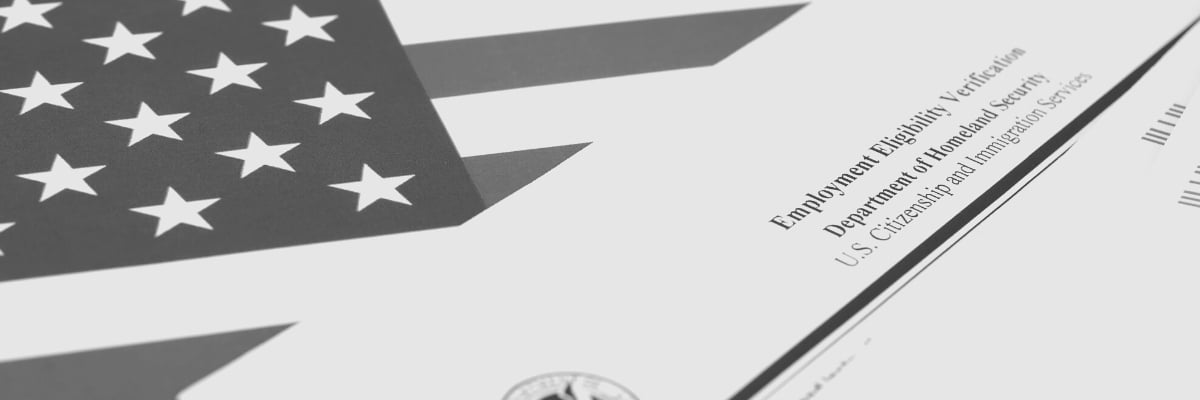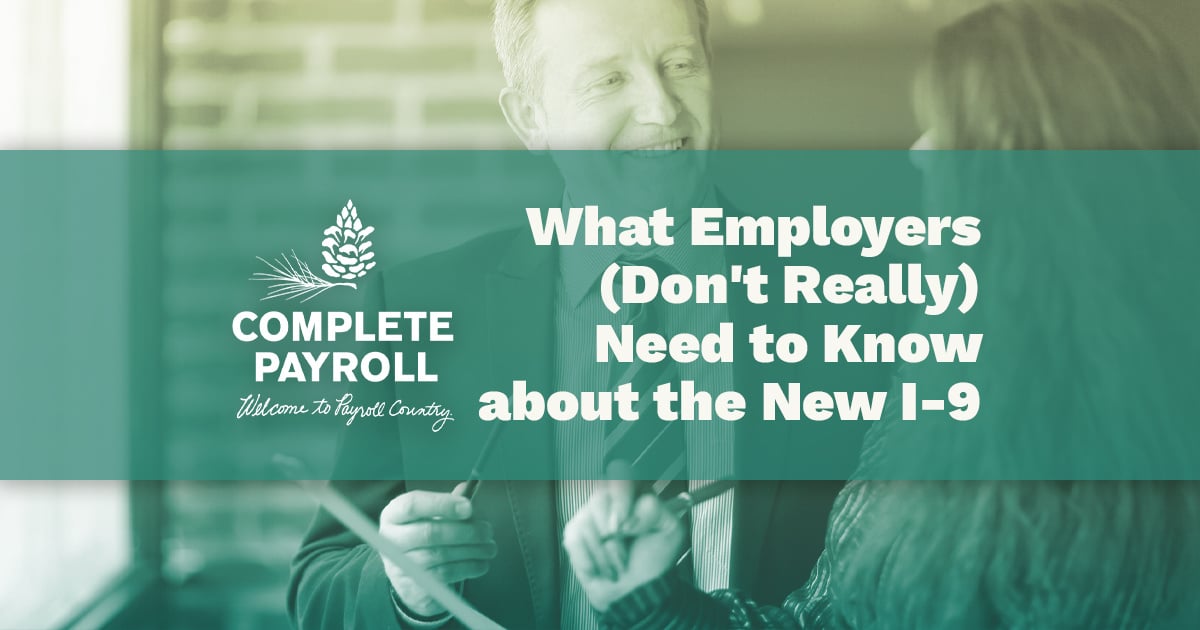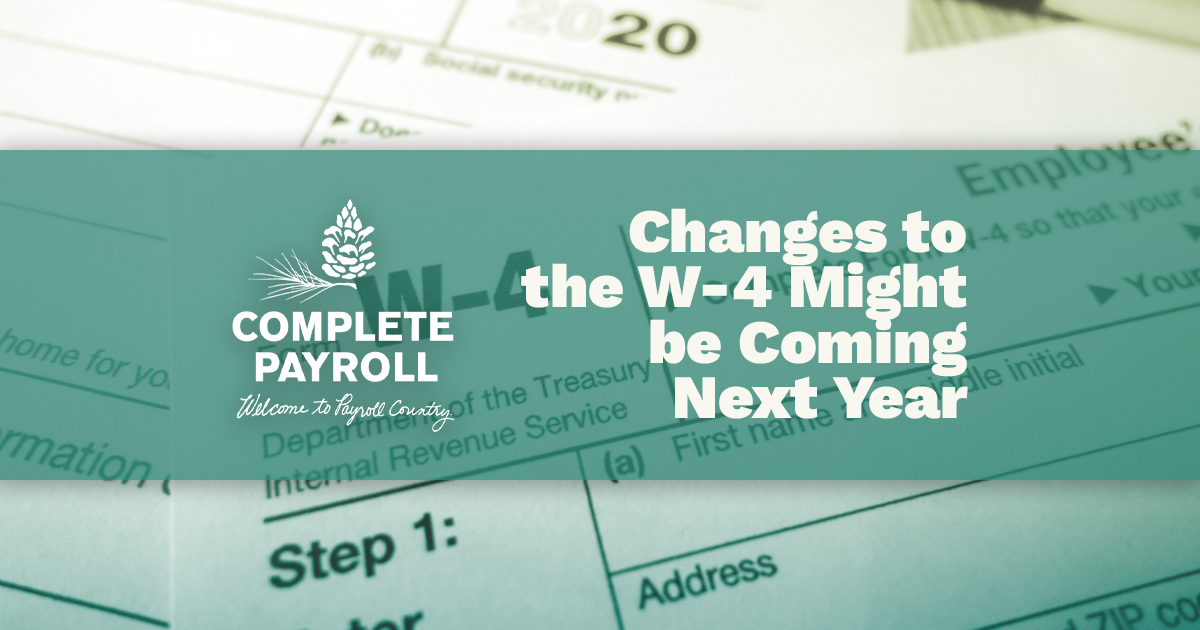What Employers Should Know About the Updated Form I-9
Written by Kevin Herbek, Dir. of Finance

On August 1st, the U.S. Citizenship and Immigration Services (USCIS) released an updated I-9 form that employers must start using before October 31, 2023, or risk penalization.
One major aspect of the I-9 update is that the Department of Homeland Security (DHS) will allow employers to examine documents using E-Verify, which provides more flexibility for employers and employees alike. The changes in the I-9 update also streamline the instructions and the form itself, which makes the employee onboarding process less time-consuming.
These changes are welcome ones, as they reflect the needs of the American workforce more accurately. In particular, the DHS’s Remote Form I-9 Alternative Procedure takes advantage of today’s technology and acknowledges the shift towards remote employment.
What’s Changed in the Form I-9 Update?
There are quite a few changes to Form I-9, many of which will help shorten the onboarding process. Here’s what to expect from the new form.
- Sections 1 and 2 have been shortened to a single page. None of the previous fields were removed, but several of them have been combined.
- Section 1 Preparer/Translator Certification was turned into a separate supplement (Supplement A). When necessary, employers can provide this to their employees.
- Section 3, Reverification and Rehire, was turned into a separate supplement (Supplement B). If re-verification is needed or an employee is being rehired, the employer can provide the new Supplement B with Form I-9.
- Section 1, the term “alien authorized to work” is replaced with the term “noncitizen authorized to work”. This section also makes a distinction between “noncitizen authorized to work” and “noncitizen national”.
- The new Form I-9 was designed so that it can be completed on a tablet or mobile device.
- Certain features were removed so that the form would be easier to download.
- There was an update to the notice at the top of Form I-9, which explains the best ways to avoid discrimination.
- The Lists of Acceptable Documents page was revised. It now provides links and guidance for automatic extensions of employment authorization documentation and a description of acceptable receipts.
- A box was added, which eligible employers should check if they examined the employee’s documentation using one of the DHS’s Remote Form I-9 Alternative Procedures instead of through an in-person examination.
- The instructions were reduced to eight pages, down from 15 pages.
- Definitions of key actors in the Form I-9 process were added.
- The abbreviations charts were removed from the form and relocated to the M-274, Handbook for Employers: Guidance for Completing Form I-9.
How to Complete the New Form I-9
The I-9 update has made onboarding employees simpler, but there are a few details that employers should be aware of.
Section 1 should be completed when the employee is hired. The employer gets identifying information on the employee, and the employee attests that they are either:
- A citizen of the U.S.
- A noncitizen national
- A lawful permanent resident
- A noncitizen authorized to work in the U.S.
Section 2 must be completed within three days of hiring the new employee. This section collects additional data regarding their employment authorization and identity and requires the employee to show original documents as proof. These documents must be reviewed by the employer.
If the new employees require preparers or translators when completing Section 1, they should also fill out Supplement A. If the employer is rehiring or reverifying an employee, they should fill out Supplement B.
Staying Compliant with the Form I-9 Update
In addition to making sure that the form is correctly filled out, employers should also observe other regulations. For example, they’re required to maintain Form I-9 records for as long as the employee is on the payroll and for the specified retention period (either one year following the employee’s exit, or three years following the date of hire, whichever is later).
According to the DHS, employers must properly complete and maintain Form I-9s for each employee. If they don’t, they could be subject to financial penalties or even criminal penalties in some cases.
Fortunately, the I-9 update makes it easier than ever for both employers and employees during the onboarding process. Form I-9 is one of many essential employer forms that businesses have to keep up with, so the fact that it’s now shorter and clearer is a step in the right direction.
Don’t forget to subscribe to Complete Payroll’s blog updates, so you can stay on top of the latest in payroll-related news.
About the Author
 Kevin Herbek, Director of Finance
Kevin Herbek, Director of Finance
Kevin Herbek is Complete Payroll's Director of Finance, and a licensed property and casualty insurance broker. He holds a Bachelor of Science degree in Business Administration with a minor in Economics from Oswego State University.
















 Get Instant Blog Notifications
Get Instant Blog Notifications

